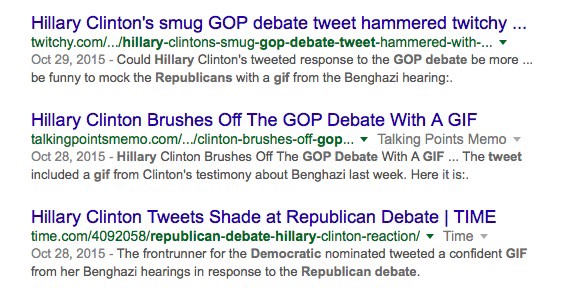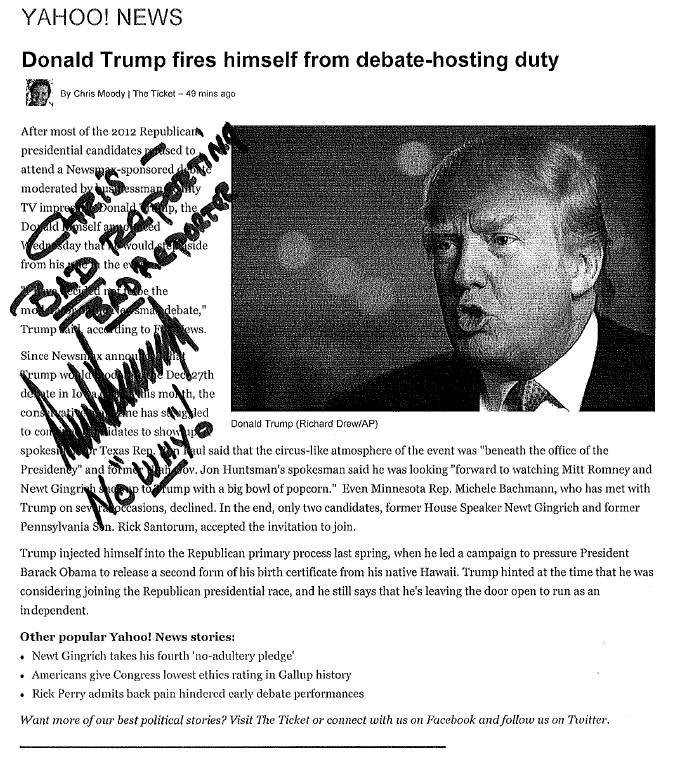Access Denied

Earlier this year a young employee at a celebrity magazine explained to me a problem. The magazine was doing reasonably well, as was its website. But both were publishing photos taken from Instagram with increasing frequency. This was fine: the photos were good and people liked them. The problem, this person said, was that it was unclear when, or how, the further publication of Instagram photos would stop.
Photos are a major feature of celebrity magazines, online or off. They’re worth paying for. They’re worth arranging at great cost. They’re worth concessions and compromises. They’re it, for a certain kind of publication. But the sudden glut of Instagram photos of celebrities and by celebrities, often with newsworthy text attached, destroys a set of common arrangements. Let’s say a celebrity couple is having a child (congratulations). A few years ago, they might have given this news to the tabloid willing to pay top dollar, or to the only celeb magazine that had refused to print a previous divorce rumor. The celebrity had power, but the magazine did as well. Aside from cash, they offered access to a large and distinct audience. Publication in one magazine might result in coverage on TV, in interview requests, etc. It would result, less visibly, in people thinking and talking about Celeb Couple. This was, in the abstract, powerful parties trading power and making money.
With Instagram, the power shifts dramatically. A genuine Celeb Couple will have more combined followers on Instagram than virtually any publication, most of whom are actual fans. (There isn’t a single celebrity publication in the top 100 Instagram accounts. People, as an example, the 10th largest magazine in the country with a 3.5 million issue circulation, has 1.1 million followers; Chrissy Teigen’s Instagram pregnancy announcement went out to 4.1 million, and her partner John Legend’s simultaneous post went to another 2.7 million.) If Celeb Couple posts a baby photo themselves, Young Employee suggested, publications would have to embed or print it anyway. Celeb Couple wouldn’t have to fight about how to frame their story, or grant any more access to a reporter or photographer than they want. The only remaining leverage for the publication to use in pursuit of exclusive photos would be money.
And so the questions spiral: Why did these magazines have money to spend in the first place? Because they had subscribers and advertisers. Why did they have subscribers and advertisers? Because they published things people enjoyed, some of which weren’t available anywhere else. How did they do that? By reporting and curating, but also by asking for and gaining access. How did they gain access? In part, by promising an audience. And so on.
Young Employee’s concern — what can we possibly do about Instagram, basically — was an expression of a worry that’s creeping up behind almost everyone in the business of distributing media for a living. Loss of power resulting in a loss of access resulting in further loss of power. It’s a disruptive new take on the media death spiral! And it’s one of the reasons that, lately, you might have noticed your media behaving a little strangely.

Once you’re looking for it, you see signs of access panic everywhere. Before election coverage had gathered much speed, Awl pal (and newsletter creator) Laura Olin, who led social media operations for Obama’s 2012 campaign, suggested that Twitter would be used by candidates as a sort of press wire: for some stories, or responses, it was easier for a campaign to simply @ an opponent or make a point directly in front of millions of followers. If the post or exchange is sufficiently newsworthy, the press would write about it anyway.
— Hillary Clinton (@HillaryClinton) October 29, 2015

There are situations that used to require the presence of a reporter to write something down and publish it that can now be resolved with a short, colloquial post. For the quick quote-response type of story, a subject has less need to grant access and the reporter has less leverage to demand it. This, it seemed, would change the jobs of both political operatives and reporters alike.
And it already has. A great deal of the still-young campaign has already played out in this manner. But the rise of Donald Trump offers a more extreme example. Trump tweets, of course. His Twitter feed addresses critics in real time, and answers reporters’ questions not in their publications but in public, usually with insult. With the tailwind of his supporters’ pre-existing disdain for a media they consider liberal or corrupt, he’s been able to manifest a fantasy he displayed more privately for years, in the form of marked-up letters of praise or disdain, which he would frequently send to publications that wrote about him. In this fantasy, his felt pen was powerful enough to make Graydon Carter a loser, to declare the Times a failing paper, or to anoint another publication a success. Now, the spirit of those letters lives on through Twitter, where social-ready versions of his felt-tip annotations are shared by thousands of people. Those short fingers, at least for those thousands of people, actually do create vulgar truths.

Highly untalented Wash Post blogger, Jennifer Rubin, a real dummy, never writes fairly about me. Why does Wash Post have low IQ people?
— Donald J. Trump (@realDonaldTrump) December 1, 2015
If Trump creates a television spectacle, Fox and MSNBC will likely cut to it, live. It will be discussed thereafter. Networks, despite this, are banding together to complain that Trump is denying them access typical during presidential campaigns; meanwhile, Trump is demanding CNN give $5 million to charity or else he won’t participate in the next debate. The Huffington Post’s July announcement that it would categorize all Trump stories as “entertainment,” keeping them out of the politics section, doesn’t seem to have slowed its coverage. “Donald Trump’s campaign severely restricted journalists’ movements Tuesday night in Myrtle Beach, South Carolina, by keeping them in a press pen,” begins a HuffPo story written by the site’s senior media reporter and posted in its “Media” section. We won’t take the bait, we scream, neck-deep in red chum.

Vox’s David Roberts, in a story that cites a perceptive post by Jay Rosen, suggests “the real reason the media is rising up against Donald Trump” is that he challenges their role as gatekeepers.
Their trepidation has less to do with the fact of Trump lying than with the way he lies. They don’t mind being properly lied to; it’s all part of the game. What they cannot countenance is being rendered irrelevant. Trump is not kissing the ring. He barely bothers to spin the media. He does not need them, or give two shits what centrist pundits think. Their disapproval only strengthens him. Media gatekeepers are in danger of being exposed as impotent bystanders.
He attributes this in part to “the development of a parallel intellectual infrastructure, a network of partisan think tanks, advocacy organizations, and media outlets that provide a kind of full-spectrum alternative to the mainstream.”
“The conceptual space for neutrality has all but disappeared,” he concludes. “Media outlets are being forced to take sides, and facing the grim possibility that even if they do, they have no power to affect the outcome.”
But this stops just short of the truth, I think. This “conceptual space for neutrality” follows from the idea that publications and reporters have a responsibility not just to discover and contextualize new information but to distribute it in a transparent or somehow balanced way. People demanded fairness from their local paper because it may have been their only local paper; people were sensitive to bias in network news because it was one of a few options providing a relatively scarce type of information. Their audiences afforded them powers: to talk to the powerful, to dedicate resources to investigations, to collect and summarize the news. These powers created a sense of obligation which, of course, they were free to fail to meet.
On an internet of platforms, this “conceptual space” hasn’t disappeared, it’s just moved. It now belongs to Facebook and Twitter and Instagram. They, not the publications that post to them, are the primary filters through which people on the internet find and consume news and entertainment. It was from this conceptual space that publications and channels decided what was newsworthy, interesting or fair; it is in this shifted conceptual space that the mechanisms of platforms — following, sharing, liking, commenting — are deployed toward the same end. A reader opened the paper, where editors had selected stories; a viewer switched to a channel, where producers had assembled shows in a particular order; a user opens an app, where the user’s habits and preferences have been gradually fed into a system that ranks platform-wide habits and preferences of others, some of whom she has indicated are especially important to her. (A small pet theory: if your sources can just post whatever they want under their own names on Twitter or elsewhere instead of giving quotes to reporters the only “conceptual space for neutrality” left for political publications is… anonymous sources! A noted and suspiciously recent scourge.)
One’s expectations of fairness and fullness have transferred from editors and producers and their products to engineers and developers and their products. The trick, this time around, is that these products are designed in such a way to reflect such expectations back to the user: we are persuaded that our feeds are our fault, which minimizes the systems through which they are continuously created. (Don’t blame us! Your feed is made of your choices. Choices you make within a framework that we’ve built!) Neutral editors or publications were always an illusion. They’re people, or made of people! Neutral feeds are an even trickier one. They’re the products of systems. Systems designed by people. (Systems within which Roberts’s “parallel intellectual infrastructure” of conservative media is both inevitable and considered part of the big balanced mix.)

Anyway! Trump is able to deny access to publications and channels that criticize him because he doesn’t need them. This is true. But one of the reasons he doesn’t need them is because his type of power is compatible with the platforms they share. Where a publication’s tendency to curate or present itself as a coherent package seems out of place on a social platform, Trump’s inability not to say whatever he feels like is better suited to Twitter and Facebook. Or: Where a news organization concerns itself with a set of self-imposed rules stemming from a sense of responsibility as a complete Source of Information, Trump concerns himself only with the material rules of his context, saying things that he knows will get the most raw response out of the most people. It’s easy, then, to see why Trump doesn’t grant access. Stupid question. Bozo — low IQ. Some blogger? Who cares.
(This contrast is disorienting enough that I think it’s made reporters a little… crazy? It certainly seems to have made some of us more amenable to the idea that Trump’s success signals the imminent rise of a new fascism, rather than the sudden release of energy from a hideous (and fascistic!) but inherently limited ideological pocket that has existed for a long time. If I’m wrong, please do clip and send this passage to my future jail cell. Don’t forget to circle this sentence with a caption that says YOU’RE IN JAIL — TOTAL LOSER.)

Politics are a useful but by no means adequate frame to understand the scope of access panic. So let’s try a very different one. And then some more!
Kotaku’s Stephen Totilo recently wrote a worthwhile post addressing his gaming site’s issues with access:
For the better part of two years, two of the biggest video game publishers in the world have done their damnedest to make it as difficult as possible for Kotaku to cover their games. They have done so in apparent retaliation for the fact that we did our jobs as reporters and as critics. We told the truth about their games, sometimes in ways that disrupted a marketing plan, other times in ways that shone an unflattering light on their products and company practices. Both publishers’ actions demonstrate contempt for us and, by extension, the whole of the gaming press. They would hamper independent reporting in pursuit of a status quo in which video game journalists are little more than malleable, servile arms of a corporate sales apparatus. It is a state of affairs that we reject.
As did pundits with Trump coverage, Totilo diagnoses the specific problem correctly, I think: Ubisoft and Bethesda were probably upset about Kotaku leaking or being critical of their products, and cut off access as a result. This is, in his words, “the price of games journalism.”
But the post’s secondary conclusions — that Kotaku rejects the idea of a games press that is a “servile arm of a corporate sales apparatus” and that this change in some way vindicates its prescient and recently implemented plan to “embed” reporters in games, rather than treating the games as objects to be reviewed — hint at a bigger worry. It’s not just that game companies might be mad at Kotaku, it’s that at the same time, they need it less than ever. What good is a complex website with a few million viewers spread across hundreds of games in a world where a company can just release a couple hours of gameplay footage of its own, or hand over a title to a YouTuber or a Twitch celebrity who’ll play nicely in front of millions of viewers? Ubisoft may be acting punitive, but the industry’s threshold for freezing people out might also be falling. (Also, consider a game like League of Legends. This online game is played by more than fifty million people a month. It is consumed as a spectator sport by countless more. It has its own stars, who are paid through a league owned by the game’s creator, Riot. These stars, and the widely viewed tournaments they play in, are covered by a “simulacrum of ESPN in the form of analysis and commentary desks, staffed by astonishingly young former players and surprisingly polished hosts” that is also owned by Riot. Its nearest precedent might be… the WWE? Idk. In any case, there isn’t a whole lot of adjacent territory left for media.)
An empowered publication’s response to getting blacklisted might be to call out the blacklister — to point to its audience and say, hey, by not working with us, you look worse to these people than any review could make you seem — a betrayal of us is a betrayal of them as well
But a diffuse audience of gamers spread across multiple outside platforms is not so easy to claim as yours. And after two years of attacks by Gamergate, a movement that, in its profound distrust of the games press, tends to side by default with the games industry, even if one of its first stated grievances was industry-press collusion, hmmmmm, it’s almost like, hmmmmmmmmmmmmm, never mind — anyway, the idea of rallying a game site’s audience against a game publisher seems all but hopeless, now.
(If this seems like a good place to draw a line from Trump internet to GamerGate internet, don’t worry: they’ve already converged on a nearby point.)
Around the corner from the games press, movie reviewers are uneasy about the release of the new Star Wars film, which won’t be screening for critics. A lack of press screenings is usually a sign that a movie is expected to get terrible reviews — if it’s more or less a done deal, why bother? Why create a few extra days of bad attention before your movie comes out? But The Force Awakens isn’t some new Adam Sandler movie about a gigolo falling in love with his son’s cotillon teacher. It’s the kind of movie that might very well get good reviews. Its enormous promotional apparatus just doesn’t need to bother — it has a plan to release and publicize this movie that doesn’t call for the small but unpredictable variable of a bunch of early reviews. A critic at The Verge worries about what this could mean for movie criticism:
There’s always been an unspoken, often uneasy alliance between film critics and studios: they show us movies early to get free press, and in exchange we say what we think to help readers decide, discuss, and contextualize. But with the glut of well-known, expanded universe films and more emphasis than ever on opening weekend performance, the balance of that dynamic could be changing. Critical coverage is an uncontrollable variable — an unnecessary risk — and in all honestly, forgoing it probably wouldn’t be bad for most big movies.
This line of argument will sound familiar to anyone who’s watched music reviewing contract and convulse over the last few years, and they will recognize that it still has further to unfold. There was never a theater-like lead time for albums, just exclusive reviewer access; now, they might stream for free a few days before release, or get teased out with a series of singles posted on YouTube. When the release day comes, the album just appears on Spotify. The value of critics to major music artists (but maybe not so much smaller ones) has been so thoroughly diminished that the access they used to be granted — to the musicians as well as their music — is now just granted directly to the fans. And who is a critic to argue with that?
The remaining mode of interaction with a major musician, then, becomes indistinguishable from a more generic press interaction with a celebrity. In that context, in which the press’s role is diminished but maybe less so, the residual need to critique or dominate the subject, as if he or she is something to be reviewed, can be jarring. The New York Times Magazine’s profile of Nicki Minaj, which was tense throughout, ended with Minaj telling the writer, “do not speak to me like I’m stupid or beneath you in any way. I don’t care to speak to you anymore.” In the Times’ T, around the same time, Miranda July profiled Rihanna in an enjoyable essay in which she suggested she had, in some way, fallen in love with her subject. If the former profile posed questions for critics about what the point of a celebrity interview is in 2015, and the power dynamics at play, the latter seemed to answer them. (Somewhere in between, you’ll find Chuck Klosterman’s profile of Taylor Swift, which is careful to make its praise sounds skeptical, and vice-versa.)
Before the T profile, Rihanna had been profiled in Fader, for which she participated in a cover shoot but didn’t offer interview access (the resulting piece by Awl pal Mary H.K. Choi is, among many other things, a fascinating meditation on access). After the NYTM profile, Minaj seems to have reasserted some of the control she had all along:
the rules: five minutes with nicki minaj. she’ll answer six pre-approved questions. selfie if you win. let’s play: https://t.co/6R6IhFLpxY
— Rebecca Haithcoat (@rhaithcoat) December 2, 2015
Elswhere, sportwriters are concerned about getting shut out of teams they’ve covered for years; their publications are worrying about access to the leagues that give them sustenance. ESPN is threatened by leagues offering direct viewer subscriptions. CNN published an article last week titled “Here’s what network TV ratings would look like without the NFL.”
The impact would be immense. NFL football accounts for just a handful of programming hours each week, but accounts for 22% of total average viewership of the three networks this fall, according to CNNMoney’s analysis of Nielsen ratings data.
At what percentage does network TV stop making sense for the NFL? Is it much higher than this?
A world in which the NFL doesn’t need TV would be a world in which the NFL really doesn’t need a traditional outside press corps. To that end, perhaps, ACE is a new media company created by the NFL Players’ Association that hopes to succeed by “leveraging… exclusive group player rights and access to more than 1,800 active players to produce compelling sports-lifestyle content focused on athletes.” This month, a player for the Jets is suggesting to reporters, apropos of not very much, that reporters have too much access to players in the NFL, which is arguably the most restrictive league in professional sports. Also this month, when Kobe Bryant announced his retirement, he didn’t give an exclusive to a reporter who had covered him for years, or to Sports Illustrated, or to anyone. He published it as a personal post on the Player’s Tribune, a first-person platform for athletes founded by Derek Jeter and open to all major sports. (NASCAR? Sure!) The rest of the sports media, again, wrote its stories anyway.
Then, of course, there’s the tech press, whose journey from outside to inside and back out again has been startling. At least to them! (For more on this, you can read my recent post, and its responses, on Medium, a platform (😃) that is “a new kind of media product — where people can share their thoughts, perspectives, and creative ideas without an editorial filter, speaking directly to an impassioned, engaged, and influential audience.” (😃😃😃)
😃

Politicians, corporations and celebrities enjoy different types and measures of power. But the effects of access panic are also noticeable as they relate to the far less powerful: just as publication without the leverage of a captive audience can’t so easily demand to sit down with a reluctant and powerful subject, a reporter might find more resistance from less powerful subjects wary of his publications’ motives. The national media meltdown over protests at Mizzou can be understood in terms of conflicting expectations regarding press:
The story of a student uprising led by black activists at the University of Missouri took an unexpected turn Monday when protesters and student journalists got into a clash over access.
A video of protesters surrounding and shoving a student photographer out of the way has since prompted indignation from journalists who say activists have gone to such great lengths to protect their own privacy and space that they have infringed on the rights of others.
The debate over what happened there got caught up in some bizarre specifics: a professor’s absurd request for “muscle” to remove a student reporter from a university quad is… what it is. But any protest movement is concerned with its interactions with the press. If its goal is to advance a cause, or to draw attention to a problem, then a given media outlet may or may not be helpful in achieving that goal.

Cooperation was never the default. But the calculation changes significantly when news outlets have less to offer. A protester might consciously accept the risk of a quote being included in a less sympathetic story if that story is the best or only way to raise awareness for a cause. That same protester, in a world in which the local paper can no more guarantee a large audience than a few dozen sympathetic Twitter users, might tell a reporter who she knows is going to have to write an on-the-one-hand story, or something that would be, in her view, worse — something condescending or racist, for example — to fuck right off. The reporter’s response, that he’s just doing his job (as in the Mizzou incident), will ring hollow, because it demands the protester accept premises about The Press that she might… not. It assumes a situation in which he is able to provide some sort of access to audience and legitimacy; it says, implicitly, that he is about to record history and represent it to the masses, so she’d better let him get her side of the story. This might sound absurd to a subject who came to a protest not because of a story from a publication, but because of a post from an activist on Twitter.
Meanwhile, at Smith college, student activists, empowered in part by the disempowerment of a media they see as antagonistic, are making demands: “If your media outlet would be open to joining us in solidarity, and recording the events that take place, we welcome your support.” And why not?

To make this as crude and simple as possible, a generation of publications and channels that were built and configured around the maintenance of large and exclusive audiences now find themselves borrowing much less coherent audiences from platforms that mediate their every action. The first and most apparent effects resulting from this change were in their styles of coverage: their stories, videos, and beats changed to better suit the new places in which they’re consumed. These changes were apparent in viral news and curiosity gap headlines; in strange patterns of coverage and new styles of bizarre colloquial feed writing and video. It was a story told largely in terms of publications and their traffic.
To lose some control over your publication’s tone and story selection is an early and conspicuous consequence of outsourcing distribution. But probably a small one, in the grand scheme of assimilation. Ceding news or entertainment judgement to the platform where your stories will be shared — the implicit goal of Facebook’s Signal product, which gives reporters the ability to see which subjects are trending on Facebook before they break wide — has implications for the deeper purpose of your operation (if it was ever more specific than “getting traffic, somewhere”). But to truly succeed in the context of a platform is to surrender at all points of overlap: to accept that your audience is borrowed, and to then bargain for the best terms possible. The publication that assumes the role of mediating the truth, or providing a unifying context for the Happenings of the World, is a peculiar fit on a platform that does much of the same thing under a different pretense. It will have to become something else, which is something I suspect a lot of publications can’t afford to do.

None of this is to say that access-bound media was ideal, or anything close. A reporter that depends on access to a compelling subject is by definition a reporter compromised. A publication that depends on cooperation from the world that it specializes in is likewise giving up something in terms of its ability to tell the truth about it. And nearly the entire media as it exists today is built around these negotiations. By giving subjects — powerful or weak — the ability to bypass organizations they used to have to work with, platforms alter the terms considerably. That’s why so many disparate media parties are descending into panic at the same time. That’s why their subjects are asserting themselves. That’s why so many professional communicators are, when it comes to their own jobs, at a loss for words.
Contained in every worried story about a celebrity publication losing access to celebrities, or a sports channel losing access to athletes, or a political press losing access to candidates, is the insinuation that something is lost; likewise, these stories tend to lack any information about what happens now. This is not a coincidence! The sports magazine losing an exclusive career announcement may signal the end of that particular kind of media object, which will be replaced with an Instagram post and a Facebook update. The competitor taking this away doesn’t look anything like the publication it’s replacing; it doesn’t think of itself as a publication at all.
Consider all the things that rely heavily on access. Mainstream music and movie reviews depend on early access; lots of types of profiles depend on access to a somehow scarce celebrity; common interview styles depend on periods of uninterrupted and unfettered (or moderately fettered!!) access on variously negotiated terms; a whole mushy middle of feature stories in which access is granted in exchange for something the subject hopes isn’t too bad and on terms the reporter accepts in hopes that the piece doesn’t come across as too credulous.
So you take all of this away and focus entirely on publishing for platforms and you’re left with a new set of options. It’s not that hard to imagine how an access-starved media rebuilds on platforms where it has been exceeded, on prior terms, by its subjects. Some of these options seem liberating. Remove the presumption of access and you have no choice but to report against the wishes of powerful subjects. Which, great! A political press that antagonizes power rather than worshipping it? Good. A tech press that doesn’t feel betrayed or embittered by a lack of access but instead invigorated by it would be, I have to think, a better tech press. Though the tribal responses to the Chan Zuckerberg Initiative (“very large!”) and its critics (“probably just jealous!”) — an almost comically loaded prompt for long-simmering discussions about…. capitalism? government? or maybe that’s giving them too much credit — haven’t been especially heartening.
But this vision always existed, and it’s not clear that the destruction of adjacent media would make it any more likely, or that type of journalism any more commercially appealing. A more antagonistic press doesn’t guarantee a more rigorous press. But it’s… something?
Or, I mean, maybe these conditions will create for audiences a clearer need for stories that the powerful don’t want told, and those audiences will reward these stories with their attention. But predicting that the further empowerment of the powerful will actually result in greater accountability, rather than just demand it, is maybe a little… optimistic? I mean, maybe social platforms will usher in a new era of investigative reporting and subsequent reform. Or maybe they’re the worst possible place for that! Someone should investigate. Would share.

Setting aside an imminent Pro Publica-in-every-pot scenario, what else is there? There are clues all around us. Check your feed! While everyone has been watching access-depending publications contort into progressively more uncomfortable positions, platform-oriented publishers have been succeeding in getting attention with newer forms. You don’t need access to celebrate things, or to join and amplify fandoms. You don’t need to interview a famous person to say how great they are. You don’t need to talk to a politician to celebrate something they’ve done. You also don’t need access to reflexively declare, “that’s garbage.” In a feed, where every story is shared in the context of the poster’s performed identity, stories that simply articulate support or disdain go far.
But the stories that go furthest on social platforms don’t merely treat users’ identities as a context, they’re more explicitly about identity. And one of the less-appreciated ways to render news in identity terms, after straightforward advocacy, is through explainers. The new explainers are well adapted to feeds: they assert authority without invoking expertise; they mimic the language of their audience; they offer closure and satisfaction in an endless stream. They’re also easy to deploy in a social context. Social explainers often purport to do work for you — to settle arguments, to articulate your position for you, to establish your rightness or to definitively assert your opponent’s wrongness. As a platform-perfect profile tells you why you’re actually totally right to love its subject, a platform-perfect explainer tells you why you’re right to feel the way you do. The onus to provide an opposing viewpoint transfers from ostensibly balanced publications to you and your platform peers. “How to Survive Your Family’s Thanksgiving Arguments” is an insane and counterproductive guide for talking to your family at the holiday dinner table, but it functions well in the context of your social feed.

So, optimistically, I guess, we build a new independent media on a bedrock of explaining and celebration and condemnation, with a side of antagonistic reporting (or hopefully more) and infinite essays and personal narratives bubbling underneath it all (and occasionally breaking through). The superfans and the haters gradually crowd toward some sort of middle, bumping up against the subjects that have colonized it: corporations, brands, leagues, celebrities, politicians, movements, causes, and endless forms of entertainment with their attendant publicity machines (if this seems like a weird or disparate set of things to compare, they kind of are: but such is the unifying effect of a platform). Power is redistributed among these things according to the platform’s values, making some previously suppressed subjects visible while suppressing new ones (in new ways!). Proliferating explainers eventually run out of obvious things to explain and throw in more reporting, too, when gaps get too big to explain around. Everything grows and everyone has enough stuff to tap on and everything is fine. Well, not fine, exactly, but… full. Very Much Existing In A Constant And Overwhelming Way.
To the extent that access is restored on-platform, it is more firmly on the subject’s terms. (What is “access” with no leverage? Cooperation?) Off-platform, or on new platforms designed around some principle besides identity, perhaps a degree of pre-platform access journalism is maintained or replicated, its forms perpetuated. Or maybe you’re one of the people who believes that Facebook and Twitter and Instagram and Snapchat are threatened by the rise of notifications, which together compose a sort of informal platform of their own, controlled by different tech companies. Then you probably have some different theories about where things are going!
Maybe at some point pundits look back at access-based journalism and think, wow, that never made sense, how rude of those weird “publications” to hold readers hostage and blackmail their subjects. The triumphalist pundits will explain this, and why it matters, but also doesn’t, and why basically everything is good and getting better, anyway. Maybe, at the same time, other pundits will lament the media’s lack of interest in certain Important things. This will be dealt with by people who will explain what is actually Important, and what does that even mean, and who, actually, you’re talking about when you accuse the media of doing or not doing something you want them to do (yourself) and why that matters, or doesn’t, and whose fault it all is. (It’s yours.)
The Content Wars is an occasional column intended to keep a majority of Content coverage in one easily avoidable place.
Trump letter scan from Business Insider. Robots cut from these videos.
